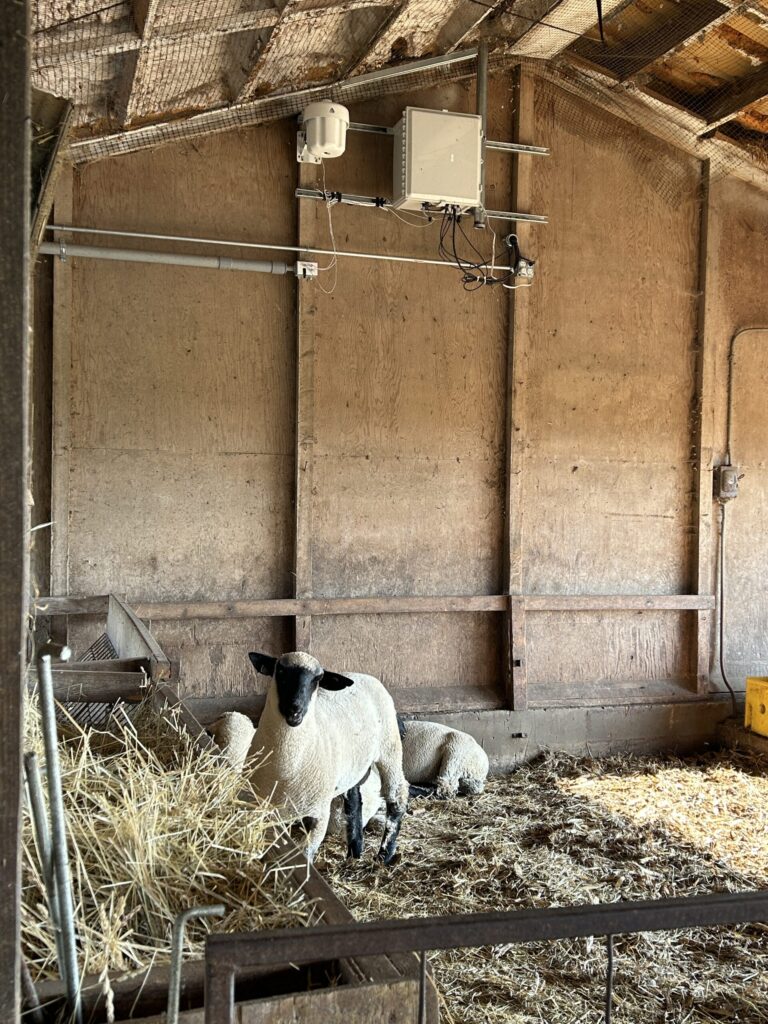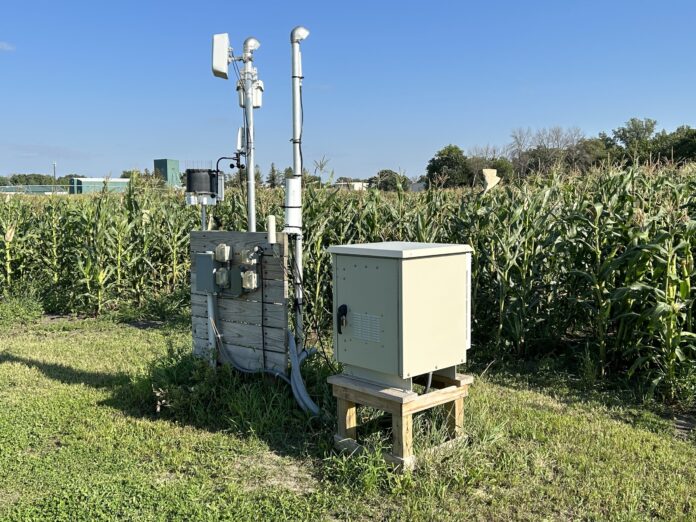Fourth testbed to focus on use cases including smart agriculture and rural broadband
The Platforms for Advanced Wireless Research (PAWR) program has officially taken live its fourth and final testbed in central Iowa, which combines both commercial and programmable network systems and is focused on exploring wireless use in rural environments.
The 5G Standalone network is based on the campus of Iowa State University, and coverage extends to parts of the surrounding city of Ames, Iowa as well as local crop and livestock farms. The Agriculture and Rural Communities (ARA) testbed, first announced back in 2021, uses backhaul and radio access gear from Aviat, Ericsson, Skylark Wireless and NI.
The network will support research into precision agriculture applications, such as livestock monitoring, agricultural automation and connected robots that will collect plant phenotyping data with stereoscopic cameras generating 800 Mbps worth of sensor data per camera. Ericsson says that its ARA equipment is “already connecting farm sites that previously had little to no broadband access,” and indicated that the Ericsson 5G radios used in the network support both midband and millimeter-wave spectrum with New Radio-Dual Connectivity (NR-DC), and that the ARA network has produced aggregate throughput up to 3 Gbps and downlink speeds of more than 2.5 Gbps in testing.
ARA uses Aviat radios for backhaul, operating at 11 GHz and 80 GHz, and also has a backup fiber backhaul connection. Using Skylark Wireless MIMO systems with research APIs, ARA can also use TV white space spectrum, and the system also has software-defined radios from NI that leverage midband airwaves.

“The goal of the PAWR program is to offer opportunities for wireless research at scale across a mix of geographic and technologically diverse environments,” said Ellen Zegura, division director for the National Science Foundation’s Division of Computer and Network Systems (PAWR is an NSF-funded program.) “Located in the heart of Central Iowa, ARA rounds out the program by offering advanced wireless infrastructure in a uniquely rural setting. Researchers will now be able to apply their skills to increasing the performance and cost-effectiveness of rural wireless deployments and to developing new applications that improve critical agricultural operations. We are excited by what the ARA team has accomplished and the broader, use-inspired research work that can now begin.”
Dr. Margaret Martonosi, assistant director for the NSF’s Directorate for Computer and Information Science and Engineering, said during a 2021 virtual event to announce the testbed that the testbed will also focus on rural connectivity. “Research conducted with ARA will create new possibilities for experimenting with broadband’s delivery models, designed to lower deployment costs and extend coverage in rural America,” Martonosi said at the time.
She added, “Broadband isn’t just about internet access on its own, rather, it’s the key factor in developing and deploying innovative solutions in fields critical to our economy, like precision agriculture, education, health, cleaner energy, self-driving vehicles and much more,” Martonosi said. “ARA’s work makes me so very optimistic about our country’s overall push to close the digital divide and provide affordable broadband access for all.”
The PAWR program already has other three active testbeds: One in Salt Lake City, Utah with a software-defined, end-to-end wireless network and massive MIMO; one in West Harlem in New York City, focused on mmwave research and innovation in backhaul technologies; and a third in the Research Triangle area of North Carolina that focuses on wirelesscommunications and unmanned aerial vehicles. Colosseum, the massive, software-defined radio testbed that provided a platform for the DARPA Spectrum Collaboration Challenge, is also a PAWR testbed.
“ARA offers a publicly available wireless living lab supporting rural-focused research, education, and innovation,” said Dr. Hongwei Zhang, professor in the ISU Department of Electrical and Computer Engineering and Department of Computer Science, and Director of the ARA platform. “We are delighted to open ARA up to the research community and look forward to supporting work that will not only help narrow the gap between rural and urban connectivity, but also advance the frontiers of 5G and 6G communications.”

